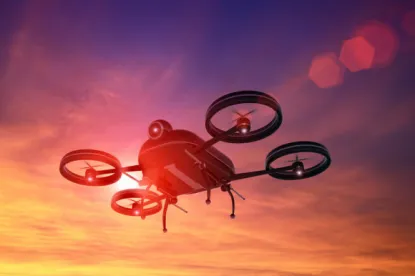What is the next big technology that will change our lives?
Quantum computing? General AI? Programmable pets? Bartending robots? Flying cars? Personal rocket backpacks?
I have one point of reference for evaluating technology predictions: how much money are big companies and governments spending to bring this technology into regular practice?
In the late ‘aughts, I remember seeing how many billions of dollars Google (not yet Alphabet), Microsoft, Facebook, Amazon, HP, Cisco and others were spending to develop the technology and the market for cloud computing. It was clear to me that cloud business models would definitely be changing our technology spend soon.
Billions spent on machine learning by the big 9 U.S. and Chinese tech companies, as well as research from both those governments, plus the Canadians, the Germans, and the Koreans tell me that this technology will deeply impact our lives soon in countless ways.
So expect to see driverless vehicles making a major impact on our lives within 5 years.
I know, I know, true driverless vehicles are against the law, need sensors we haven’t invented yet, don’t work in the rain, and arrive with too much complexity to manage.
But they will be here.
A 2017 report by the Brookings Institute found “The trend indicates that investment in 2018 should be substantially more than the $80 billion disclosed from 2014 to 2017, and continue upward for some period of time as the race to deploy self-driving moves on.”
Despite the failure of the $100 million dollar spending bill in Congress for 2018, private industry is more than making up the spend. According an article in the International Business Times public companies known for dominating multiple industries are spending enormous sums to develop self-driving technology. The November, 2019 article, citing a Leasing Options UK study stated;
“The report indicated that Volkswagen is driving the charge when it comes to driverless technology with an investment of $54.2 billion and 57 percent share in total industry investment of self-driving cars.
Right behind Volkswagen is Samsung, spending a reported $8 billion on driverless technology followed behind by Ford ($5.39 billion) and Toyota ($4.32 billion). Rounding out the investment category is Daimler at $3.04 billion, BMW at $3 billion, and Audi at $3 billion, the report said.
According to the study, in the middle of the pack is Honda, spending $2.76 billion, Softbank, investing $2.27 billion, Kia with a $2 billion investment, and Hyundai also with a $2 billion investment in self-driving vehicle technologies.
Spending the least on its driverless vehicle programs is Volvo at $308 million with Apple, General Motors, and Uber just ahead at $1 billion, $1.5 billion, and $1.88 billion, respectively.”
With this kind of cash invested, these huge companies are expecting a serious return. And they are not the only companies involved. In February of last year, Bain Capital Ventures led a Series A round of $52 million for the self-driving truck company called Ike, Amazon entered the “last mile” race by investing in Aurora Innovation, and Softbank dropped nearly a billion dollars into Nuro.ai, which makes boxy little delivery vehicles.
Please note the scope and breadth of the investments here. Companies like Volkswagen and Honda are surely seeking autonomous cars to sell to consumers. But many of these investments are for delivery vehicles from warehouse scooters to substitutes for the 18-wheelers that deliver most of our goods in this country. Clearly Uber and others are focused on ride-hailing vehicles to rid themselves of those pesky drivers with their outrageous demands to be paid for their work.
A good place to examine the industry is with a new division of General Motors named Cruise. The new Cruise Origin is a toaster-shaped vehicle with no steering wheel that GM advertises with the line, “It’s not an improvement on the car. It’s what you’d build if there were no cars.” Then noting that it will not be selling these to consumers, but operating them itself as ride sharing options. According to the New York Times, “Cruise and Honda said in 2018 they would jointly develop an autonomous vehicle that would be built in large volumes for use globally. Honda committed $2 billion over 12 years for the project and invested $750 million for an equity stake in Cruise. GM executives have said the market for autonomous ride-hailing could exceed $1 trillion, and have suggested that profits from a future service could exceed that of GM’s traditional vehicle-manufacturing business.”
What of the legal hurdles? As Uber has already demonstrated, sometime just putting a service on the street can lead to a shift in laws permitting that service. And with so much money spent already, a little thing like illegality should not be a stumbling block. 11 states passed laws permitting truck platooning, which is expected to be one of the earliest commercial uses of autonomous driving. Platooning allows the driver in the lead truck to manage a two truck platoon, with the follow vehicle an unmanned truck that takes its cues from the lead. Several states have called for studies of autonomous drive systems, but we have yet to see published results. Since 2012 at least 41 states have considered legislation related to autonomous vehicles. California recently expanded its testing rules to allow for remote monitoring of driverless cars, rather than insisting on a safety driver seated in the vehicle.
So much invested by so many companies, so many state legislatures ready to assist them. We will be riding in driverless vehicles within the next five years.
But who is funding investments in my personal rocket backpack?




 />i
/>i

